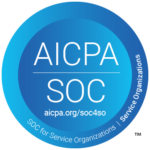A successful MSP-client relationship starts well before your engineers get to work. It starts with the first conversation and continues, critically, with the MSP-client agreement. Setting up the right agreement type will lead to profitability, efficiency, transparency, mutual trust, and a long-term commitment. On the other hand, the wrong agreement type could result in lost profits—not to mention a frustrated client and a dinged reputation.
This blog post, based on a recent webinar we hosted with Rex Frank, CEO of Sea-Level Operations, will discuss the various agreement types. It will address situations when each agreement type is beneficial or not recommended, and it will go over best practices for the various types. The following agreement types will be discussed:
- Block time - one time agreements
- Block time - recurring agreements
- Product-only agreements
- General monitoring agreements
A general piece of advice, before we turn to individual agreement types: Keep it simple. Complicated agreements could mean that engineers don’t know what exactly they’re supposed to be doing, or that billing does not reflect the work done. A crucial outcome of agreements is a clear understanding by both parties, to avoid disputes down the line.
This blog post is Part 1 in a two-part series on MSP-client agreements. In a follow-up post, we will do a deep dive into Flat-Fee Agreements, an important agreement type for most MSPs, but one that can be difficult to correctly analyze. In the next blog, we’ll give you ways to examine if your flat-fee agreements are meeting their efficiency and profitability goals.
Block Time - One Time Agreement
What it is: A block time – one time agreement that includes pre-paid time and materials hours. The client pays the MSP up front, and the MSP charges against that payment as work is done. The money doesn’t count as income when it is received. Instead, it should be recorded as deferred revenue on a balance sheet. As work is done and invoiced, the money comes out of deferred revenue and goes into your P&L statement as income, at which point it becomes billable.
Example: A client pays the MSP $5,000 in advance for 40 hours of work billable at $125 an hour. As work is done, the advance is earned.
What it’s best for: Clients who aren’t (or aren’t yet) on a fully managed service
Tip: In general, block time – one time agreements have shortcomings. There are no incentives for efficiency, and the MSP runs the risk of devaluing its margins in the long run, especially if a discount is offered for prepayment.
Block Time - Recurring Agreement
What it is: This is similar to general monitoring agreements (listed below), except that the limits on it are based on quantity of hours, not type of work. Overages are billed at actual rates as time and materials.
Example: The MSP sells 8 hours/month to a client at $800. The revenue is realized upon invoice date and can cover any work type.
What it’s best for: Staff augmentation agreements and IMACs (Install – Move – Add – Change) that are outside of standard monitoring agreements to provide a level pay option
Tip: Some clients prefer unlimited worktypes on block time – recurring agreements, but these agreements can result in disadvantageous economics—your engineers may end up spending more time onsite than is profitable. A better option is to have a block time recurring of a certain number of hours onsite each month.
Product-Only Agreement
What it is: Recurring billing of product resale only. A product-only agreement does not include labor, so there is no revenue associated with time spent on the agreement. The product-only agreement may or may not be a child agreement, whereby it is still billed on the same invoice with managed services and block time, but it’s separated out with its own revenue, costs, and profitability.
Example: The MSP resells software license or agents, with no labor component.
What it’s best for: Product-only agreements are good for:
- Cleanly separating recurring product from recurring labor (a recommended separation)
- Identifying labor allocations where labor is not sold
Tip: If there is labor on your product-only agreement, there’s something wrong. For example, if an MSP finds that a product-only BDR agreement has associated hours, then the agreement should be restructured or reclassified to includes revenue for the labor allocation.

General Monitoring Agreement / Flat-Fee Agreement
What it is: A general monitoring, or flat-fee, agreement covers time, which is unlimited for certain work types. Work roles that are not included are treated as time and materials (actual rates).
Example: An MSP provides $1,000 worth of work in a month. As the engineer enters time, the time is added toward the agreement, but not billed if the worktype is covered. If the value of the time were $800 (5.33 hours at $150/hour), then the MSP would have billed 1.25X the value delivered. This is the efficiency of the agreement. Efficiency should be monitored to make sure the pricing of the agreement is close to the value of the services delivered.
What it’s best for: General monitoring agreements are good for general use for any fixed-fee services. They’re helpful for Service Leadership Index tracking (MS vs. TS), allowing managed services agreement billing to be driven into a managed services income account. They are also beneficial for determining efficiency. Using data tracking tools, the MSP can clearly see how to proportionally allocate engineers’ revenue for maximum efficiency.
Tip: Offering clients unlimited hours in a general monitoring agreement may sound unwise, but clients are busy and don’t want to be on the phone with you all day. Clients do not enjoy reviewing the cost of every time entry on an invoice. Bundling the time under a single price can improve your relationship with your clients.
General monitoring agreements are often in both parties’ best interest. But because they’re so robust, getting the initial setup right is essential. Don’t take needless risk at the start of an MSP-client relationship by not doing proper calculations and planning.
Conclusion
While each agreement type has situational value, it is flat-fee agreements that can be the most potent agreement type. They allow MSPs and clients to have clear service expectations, and done right, they can be maximally efficient and profitable. However, knowing how to do them right is not intuitive or obvious. MSPs need the right MSP tools to let them know whether their flat-fee agreements are performing at maximum efficiency and profitability.
In our next blog post, we will turn to how to maximize flat-fee agreement profitability.
If your MSP has Fixed Fee Agreements and has a difficult time determining if they are profitable or not—and how profitable (or not) they are—give us a call. MSPCFO will gladly demo our platform using your own data and show you how to rank the profitability of each client.





